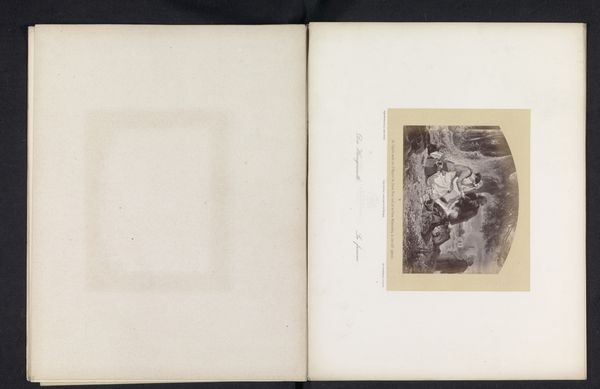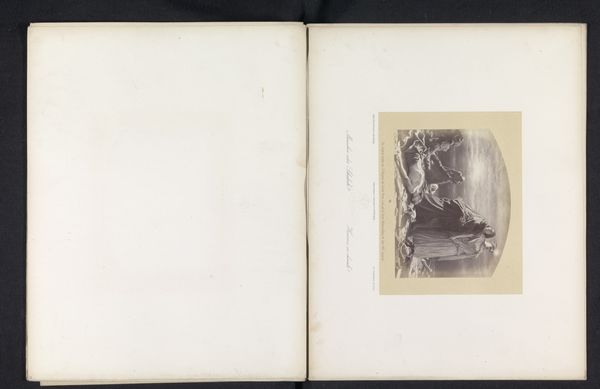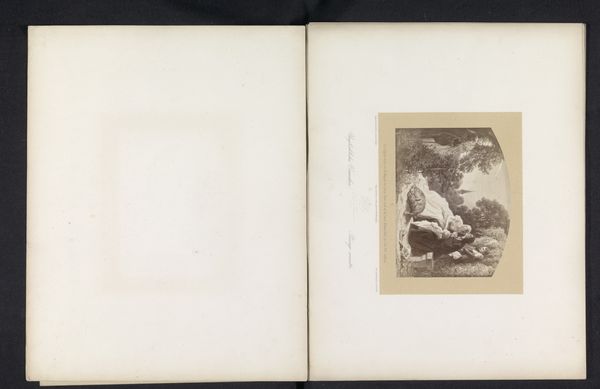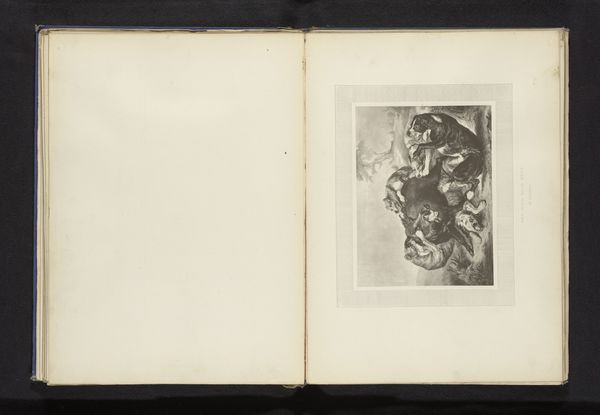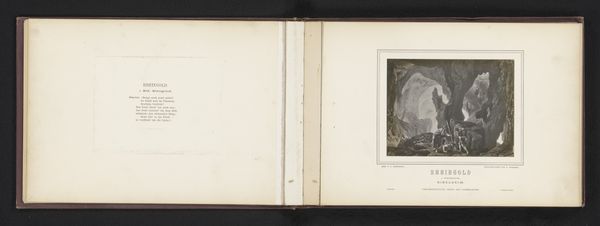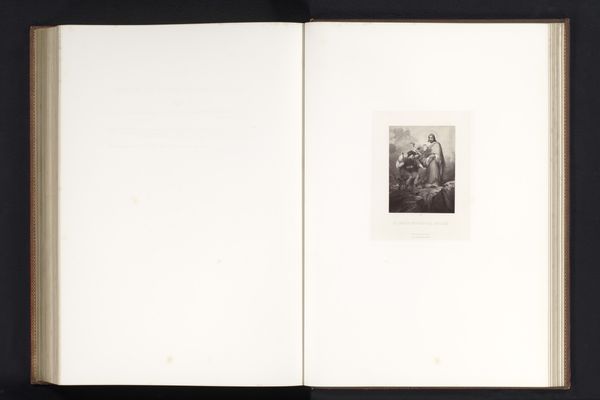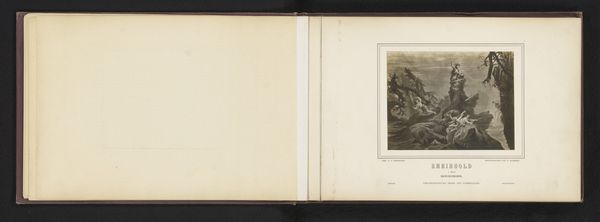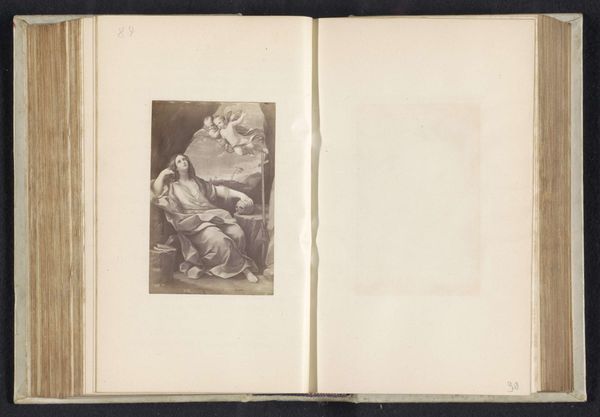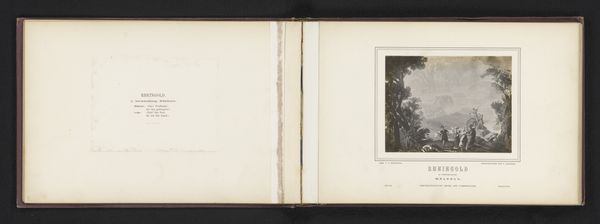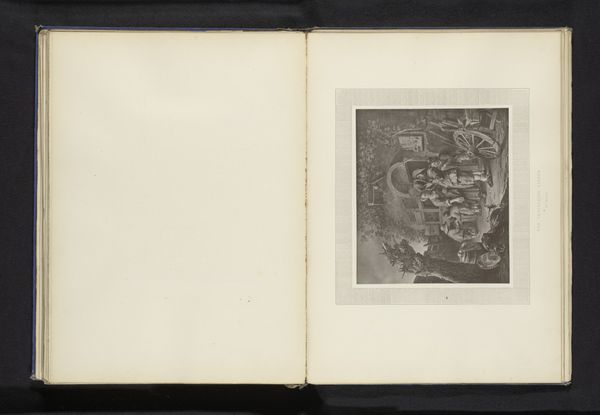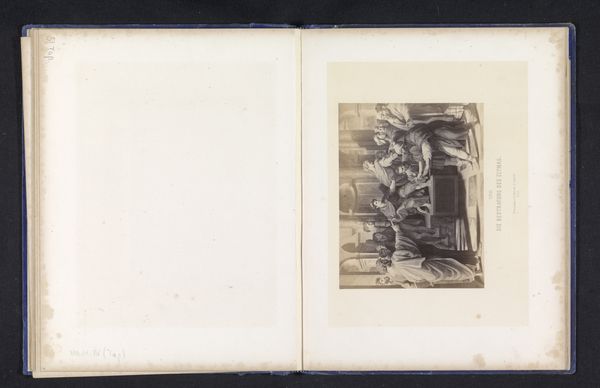
Fotoreproductie van een tekening van een man en een vrouw voor een brandende stad waaruit mensen wegtrekken before 1868
0:00
0:00
print, photography
#
aged paper
#
homemade paper
#
script typography
#
paperlike
# print
#
sketch book
#
hand drawn type
#
landscape
#
paper texture
#
photography
#
personal sketchbook
#
hand-drawn typeface
#
thick font
#
history-painting
Dimensions: height 115 mm, width 148 mm
Copyright: Rijks Museum: Open Domain
Curator: Before us, we have a photograph of a print made before 1868 by Ludwig Angerer, titled “Fotoreproductie van een tekening van een man en een vrouw voor een brandende stad waaruit mensen wegtrekken.” Quite a mouthful! Editor: Indeed. The stark contrast and composition evoke a sense of overwhelming dread, doesn't it? The way the figures are positioned against the backdrop of the burning city, it's immediately arresting. Curator: Let’s consider the material production. It’s not just a drawing; it's a photomechanical reproduction, a print made from a photograph of a drawing, opening up questions of reproducibility and dissemination in art. How does that shift our understanding? Editor: It forces us to acknowledge the labor involved. Not just the initial artistry, but also the photographic process, the printing—multiple hands and technologies contributed to the final product. We see "homemade paper" and "aged paper" referenced in the notes too. What does this specific support and production process suggest? Curator: I would draw our attention to the symbolic structure. The foreground couple are presented quite theatrically. Note the use of light and shadow to create a melodramatic effect. This seems characteristic of history painting traditions. Editor: I am more compelled by what we aren't seeing - who commissioned the original drawing? What sort of paper was specifically selected and how might the economic factors in play have shaped the means and medium? Curator: Those are intriguing points to explore regarding the contextual significance and artistic creation and how this reproduction functions within the socio-political environment of its time. Editor: Exactly. And thinking about that original "sketchbook" and "hand drawn" aspect listed as defining features— it invites us to consider the hand, the artist’s touch, the directness of the gesture, now mediated through this photographic print. It removes immediacy in some ways. Curator: It has been enlightening to consider both the formal qualities and the broader production involved in the image before us. Thank you for enriching my perspective. Editor: The pleasure was all mine. Recognizing the various layers and complexities inherent in the image’s making encourages deeper inquiry.
Comments
No comments
Be the first to comment and join the conversation on the ultimate creative platform.
